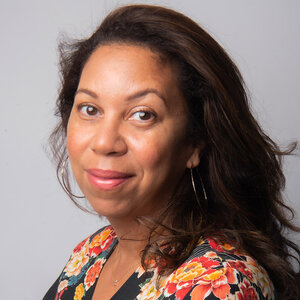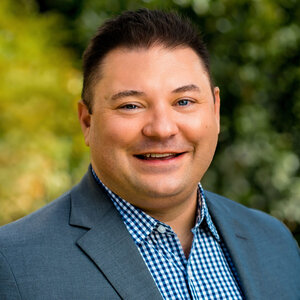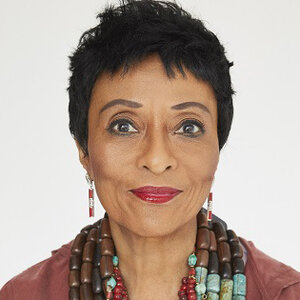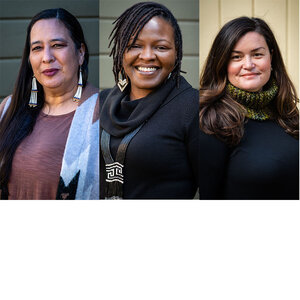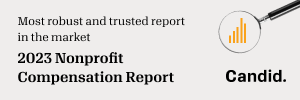Ben Jealous, Executive Director, Sierra Club: Drawing on our unique strengths to create champions for wild places
February 28, 2023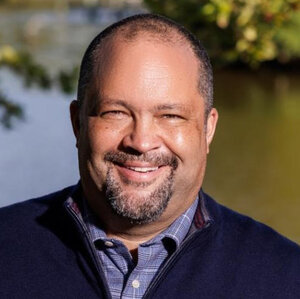
Ben Jealous, the executive director of the Sierra Club, is a former organizer and investigative journalist, an author, educator, and civil rights activist. A Rhodes Scholar and graduate of Columbia University and University of Oxford, Jealous worked as a reporter and managing editor at the Black-owned community newspaper the Jackson Advocate, where he exposed “cancer clusters” in Mississippi’s rural communities caused by industrial pollution. He also served as the executive director of the National Newspaper Publishers Association, where he developed a platform that allowed dozens of Black community newspapers to publish online for the first time and exchange content.
In 2008, Jealous became NAACP’s youngest-ever president and CEO. While there, he launched the Climate Justice Program, sustained its membership growth, doubled its annual budget, and saw its base of online activists quadruple and its donor rolls increase eightfold. He has taught at Princeton University and the University of Pennsylvania and is the author of REACH: 40 Black Men Speak on Living, Leading, and Succeeding. Recently, Jealous served as president of People for the American Way (PFAW), where he co-led an advocacy and civil disobedience campaign by civil rights activists, women’s rights advocates, and religious leaders to convince the Biden administration to take a more assertive role in overcoming a Senate filibuster of voting rights legislation.
PND spoke with Jealous about lessons he’s learned fighting against injustice and inequality; the importance of activism, especially at the ballot box; his preparation for his role as executive director of the Sierra Club; the intersection of poverty and environmental justice; and the role philanthropy plays in climate change mitigation.
Philanthropy News Digest: You’ve indicated that now at age 50, you’ve been organizing and advocating for change for more than half of your life. What is the most important lesson you’ve learned in striving for progress against injustice and inequity? What would you tell emerging activists?
Ben Jealous: What I’ve learned is that to win the most important fights in a democracy like ours, you have to build uncomfortably large coalitions. To do that, you have to focus on the one thing that you agree on and pursue that, rather than find all the ways you differ. At the NAACP, we worked to pass laws in 12 states to reduce the incarceration of youths and closed a prison in Texas for the first time. And we did it alongside groups funded by the Koch brothers and Tea Party supporters. At the Sierra Club, we’ll make sure there are no disposable environmentalists. The fights are too big, and the stakes are too existential to leave anyone out.
What I’ve learned is that to win the most important fights in a democracy like ours, you have to build uncomfortably large coalitions. To do that, you have to focus on the one thing that you agree on and pursue that, rather than find all the ways you differ.
PND: In your time leading protests and organizing, after being trained to do so along with Stacey Abrams by union leaders Richard Womack and Bill Lucy at an AFL-CIO summer institute for Black student organizers, what can you share about the importance of sustained activism, especially at the ballot box, in the kind of efforts that you and Abrams have shared?
BJ: For the book I just wrote, I spent a lot of time looking back at history. With family roots in the South, I think I’m genetically predisposed to that kind of reflection. What you see over and over is when poor and working-class people come together to create change that will better their lives, the wealthy and powerful concoct ways to divide them. My grandmother’s grandfather, who had been enslaved, brought Black Republicans into a populist political party in Virginia called the Readjusters, led by a former Confederate general. They all wanted a better future for their kids and to hold on to the newly created public schools that their children attended, and that white oligarchs wanted to go bankrupt. The Readjusters ran Virginia for about five years near the end of the 19th century but eventually fell prey to a vile disinformation campaign that split their coalition. Virginia eventually built a poll tax into its state constitution that cut the Black vote by 80 percent but also cut the white vote by 50 percent. It demonstrates how powerful the ballot box can be—they needed to, in essence, outlaw the kind of multiracial party that had posed such a threat.
PND: How has your work with organizations like the NAACP and People for the American Way prepared you for your next role leading the Sierra Club?
BJ: The NAACP traces back to a tradition that Frederick Douglass encountered in Ireland’s anticolonial movement. It’s a tradition that values one thing—real wins in real time. The Sierra Club’s strength lies in its members and supporters in every state. For example, we have volunteers in all 351 municipalities in Massachusetts. That uniquely positions us to take on local issues that aggregate into national transformation. It also means we need to support those local champions as they organize and carry out their campaigns. That’s how we grew membership, increased fundraising, and achieved important political victories at the NAACP. We will follow the same course at the Sierra Club by drawing on our unique strengths to create champions for wild places through our outings and to take on fights that matter in every state.
PND: The NAACP has reported that people in Black communities have died or become chronically ill because of exposure to toxins. The Hispanic Federation has discussed how environmental equity deeply affects Latino communities when access to parks and green spaces is reduced, including those directly impacted by climate change, as Earthjustice has reported. As the new head of the Sierra Club, how do you plan to advance environmental justice for minority communities?
BJ: I hear some people question whether we can push for a safer, more livable planet and demand a fairer, more just, more equitable society at the same time. They can’t decide if pursuing social justice is an impediment to protecting the planet. I see it differently. Our economy is built on choices about which people and places are disposable. People in poverty and without power always end up on the wrong end of that choice. When we fight for less pollution, when we fight for preserving the climate in ways that reduce events like floods and tornadoes, we are protecting those communities. When we fight to ensure all people can vote, we are making sure those impacted communities can express their power.
When we fight for less pollution, when we fight for preserving the climate in ways that reduce events like floods and tornadoes, we are protecting those communities. When we fight to ensure all people can vote, we are making sure those impacted communities can express their power.
PND: You’ve stated that more jobs can be created while saving the planet. Could you summarize in what ways that can be accomplished?
BJ: Two things are happening. Innovation and technology are changing what is possible, and the United States is about to make a once-in-a-generation investment through the Inflation Reduction Act and the Infrastructure Investment and Jobs Act. We have a fulcrum to push the economy from one based on industries that destroy to industries that restore.
PND: Poverty is a significant issue that intersects with environmental justice. How can efforts to address poverty assist in protecting the environment, and vice versa, and what would it require?
BJ: The future of the planet will be assured on the day the world’s poor are convinced that sustainability is in their short-term interest. The choices that destroy the environment are choices that people make because they need jobs. When I was an investigative reporter, I covered cancer clusters in Mississippi. People knew that emissions from the factories were destroying their health just like they were destroying the paint on their cars. I was told time and again, “We needed the jobs.” We can create good jobs that don’t destroy lives and places.
PND: The ClimateWorks Foundation has reported that less than 2 percent of global philanthropic giving has been dedicated to climate change in recent years. What part do you think philanthropy should play in climate change mitigation? How can these efforts be improved?
BJ: We certainly welcome and appreciate all the philanthropic support directed at combating the climate crisis. At the same time, we must recognize we’re opposed by a $200 billion fossil fuel industry. We also must acknowledge the scale and speed of climate decay. We encourage philanthropic funders to keep in mind how a healthy planet advances other issues such as education, health, human rights, equity, and food security that they are invested in as well. We urge them not to assume that the recent historic federal investments in a cleaner, greener economy alone will ensure we reverse climate damage.
We encourage philanthropic funders to keep in mind how a healthy planet advances other issues such as education, health, human rights, equity, and food security that they are invested in as well.
PND: What are federal, state, and local governments getting right about protecting the environment, and what needs further action?
BJ: In the last two years, President Biden and Congress have given us a once-in-a-lifetime chance to change the economy from one that relies on destroying people and places to one that makes that planet more livable. We think nostalgically about President Kennedy’s “moonshot” pledge that landed people on the moon. That cost the United States about $300 billion in today’s dollars. President Biden and Congress committed almost $700 billion in the next 10 years to reduce pollution, particularly in marginalized communities most likely to suffer, and to make the transportation and energy sectors cleaner to preserve the climate. That’s our “Earthshot.”
PND: In many respects, Indigenous communities are at the forefront of the fight against climate change and biodiversity loss. However, much of the ramifications of climate change are also inextricable from social injustices carried out upon Indigenous communities. Eriel Tchekwie Deranger, executive director of Indigenous Climate Action, has stated that “the climate crisis cannot be addressed in any meaningful way without addressing its root causes—capitalism, colonialism, and extractivism.” What are your thoughts about the impact Indigenous communities have had in this fight, what their allyship could mean going forward, and how governments and other communities can work to address the root causes of the climate crisis?
BJ: I’ve been traveling across the country, talking to our volunteers, staff, and allies as I start as the Sierra Club’s executive director. In Washington State, I was able to sit with tribal leaders from the Lummi Nation and the Yakama Nation, who are concerned about the dwindling salmon populations in the Columbia and Snake Rivers. They believe they share an origin with the salmon, so the extinction of fish amounts to an extinction of their culture. We want to support them in removing dams that frankly were erected without considering treaties or their nations. We’ve done this before with tribal leaders in the Pacific Northwest opposing coal terminals threatening their lands. In general, our view will be that there are no disposable environmentalists. The fight is too big, and the stakes are existential. We will continue to find ways to work alongside allies from all quarters of the Sierra Club.
— Lauren Brathwaite
(Photo credit: Christopher Jason Studios)


